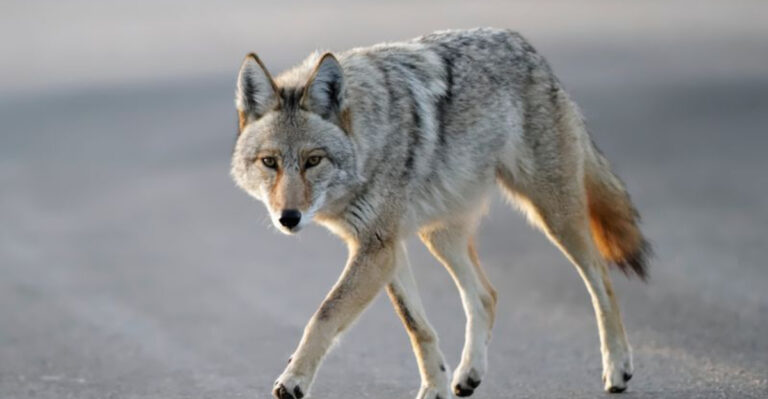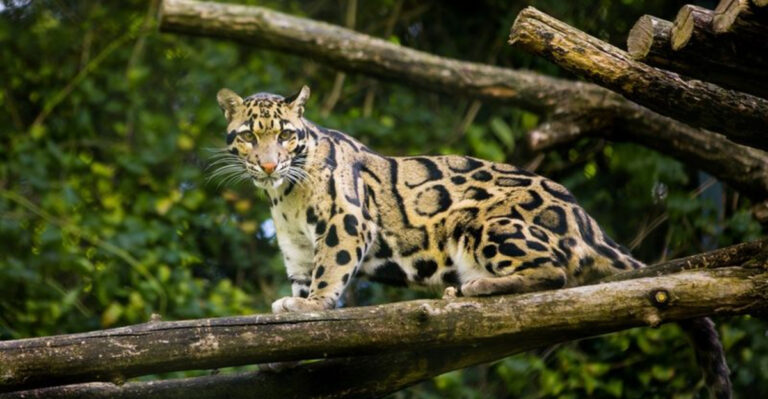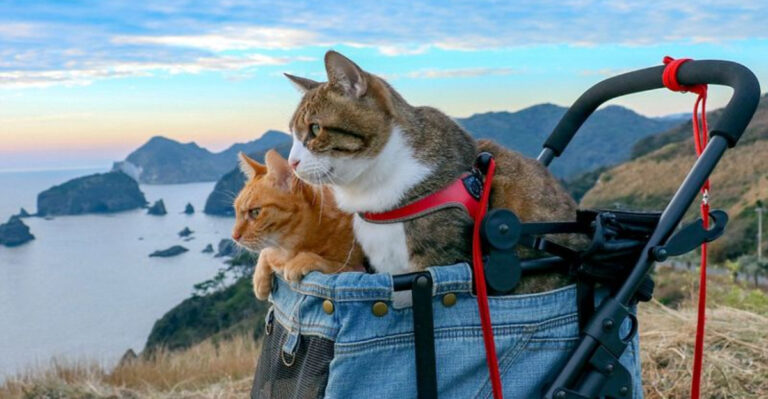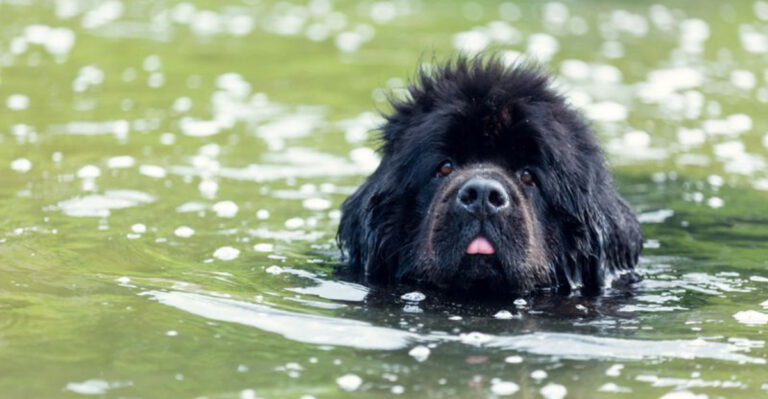Top 18 World’s Cutest Animals You Should Never Keep As Pets
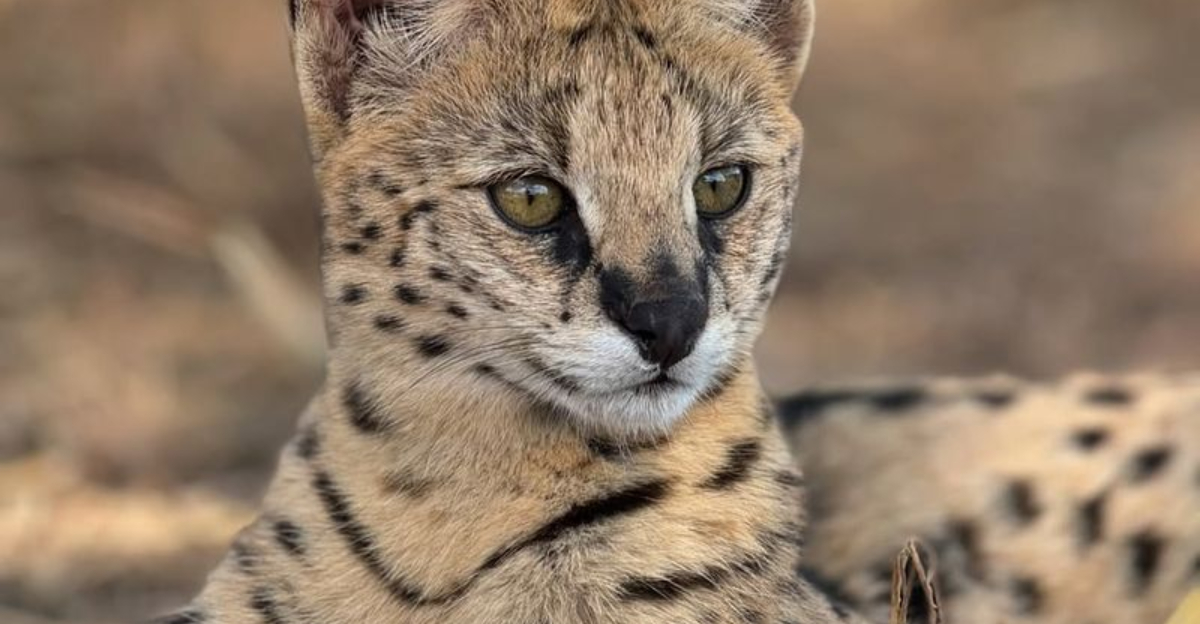
In a world filled with adorable creatures, it’s tempting to want them all as companions. However, some animals, despite their cuteness, are just not suitable for domestic life.
This list explores charming animals that should remain in the wild, not in our homes. From their unique behaviors to special habitat needs, these animals are best admired from afar.
1. Fennec Fox
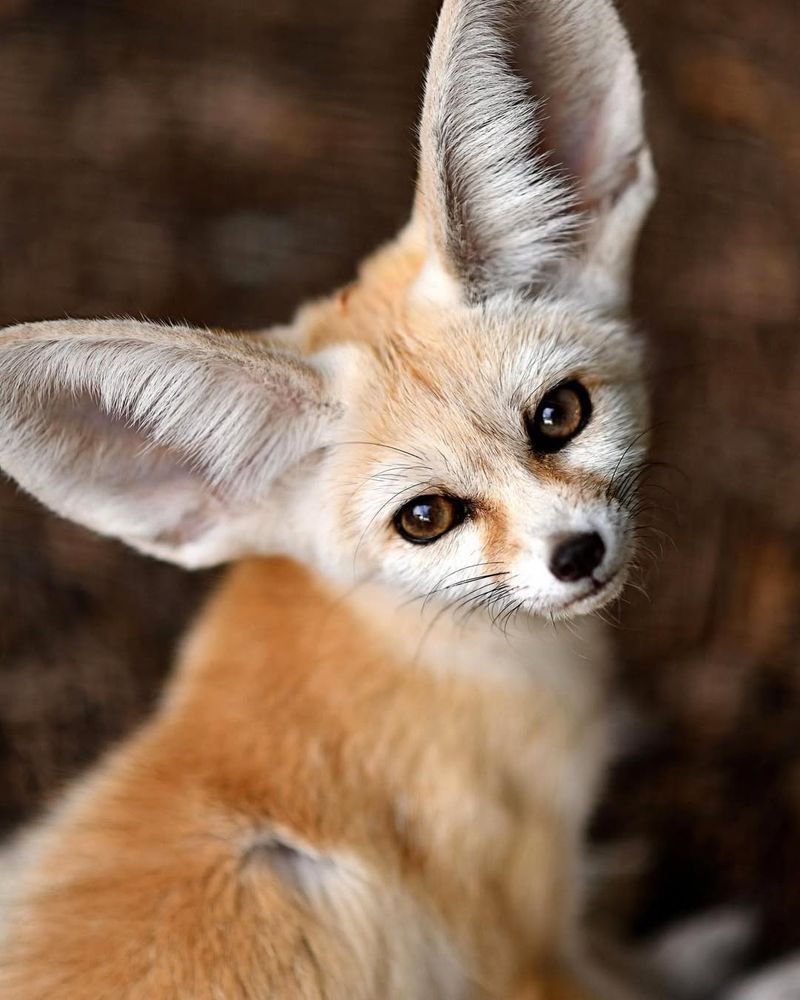
The fennec fox, with its oversized ears and playful demeanor, might seem like a perfect pet for your living room. These small, nocturnal foxes are native to the Sahara Desert and are known for their incredible ability to adapt to extreme temperatures. Despite their pint-sized appearance, they are far from low-maintenance.
Living primarily in sandy burrows, fennec foxes are expert diggers and require a lot of space to fulfill their instinctual needs. Their diet is also rather specific, needing a mix of proteins, fruits, and insects. Most urban homes can’t replicate their natural environment, leading to stress and health issues for these cuties.
Moreover, fennec foxes are social animals, often living in groups in the wild. When kept alone, they can become lonely and distressed. Admire their cuteness from afar and let them thrive in the desert where they belong.
2. Slow Loris
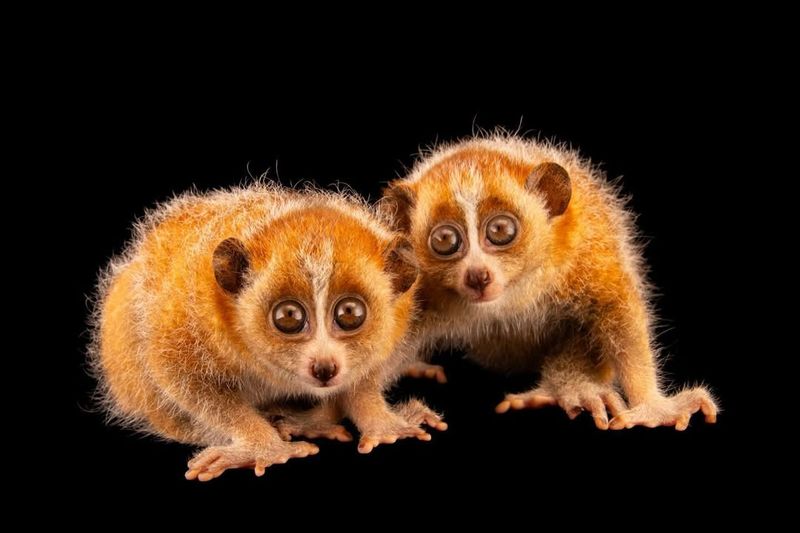
With its big, soulful eyes and gentle appearance, the slow loris looks like a plush toy. Found in the tropical rainforests of South and Southeast Asia, these primates have a secret weapon: they are one of the few venomous mammals, with glands near their elbows secreting a toxic substance.
Slow lorises are nocturnal creatures, relying on their keen sense of smell and taste to hunt insects and small animals. Their slow movements are not due to laziness but a strategy to avoid predators. Their unique adaptation to their natural habitat makes them unsuitable for life in captivity.
Capturing slow lorises for the pet trade often results in severe stress and injury, as their sharp teeth are usually clipped to prevent bites, which is both painful and traumatic. It’s best to appreciate these fascinating creatures in documentaries rather than your living room.
3. Axolotl
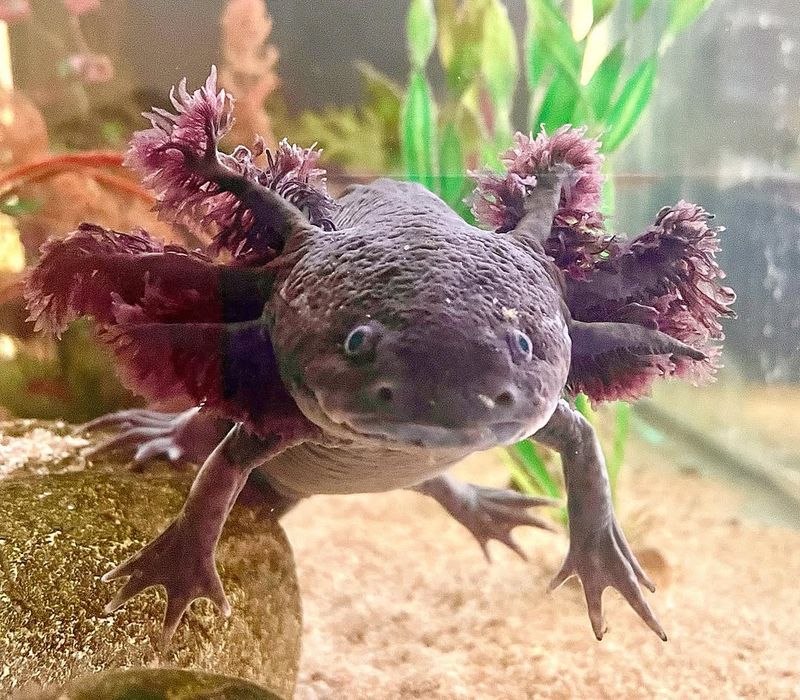
The axolotl, known for its permanent smile and frilly gills, is a fascinating amphibian that never grows up. Native to lakes in Mexico, these “walking fish” are actually salamanders stuck in a juvenile stage, a condition known as neoteny. Despite their quirky charm, axolotls are not ideal pets.
They require precise water conditions, including specific temperature, pH levels, and cleanliness, which can be difficult for the average pet owner to maintain. Furthermore, they are very sensitive to changes in their environment, which could lead to stress or illness.
Axolotls also have specialized dietary needs, feasting primarily on worms and small aquatic creatures. Their natural habitat is unfortunately shrinking, leading to a drastic decline in their wild populations. It’s better to support conservation efforts than to try and keep one of these captivating creatures at home.
4. Sugar Glider
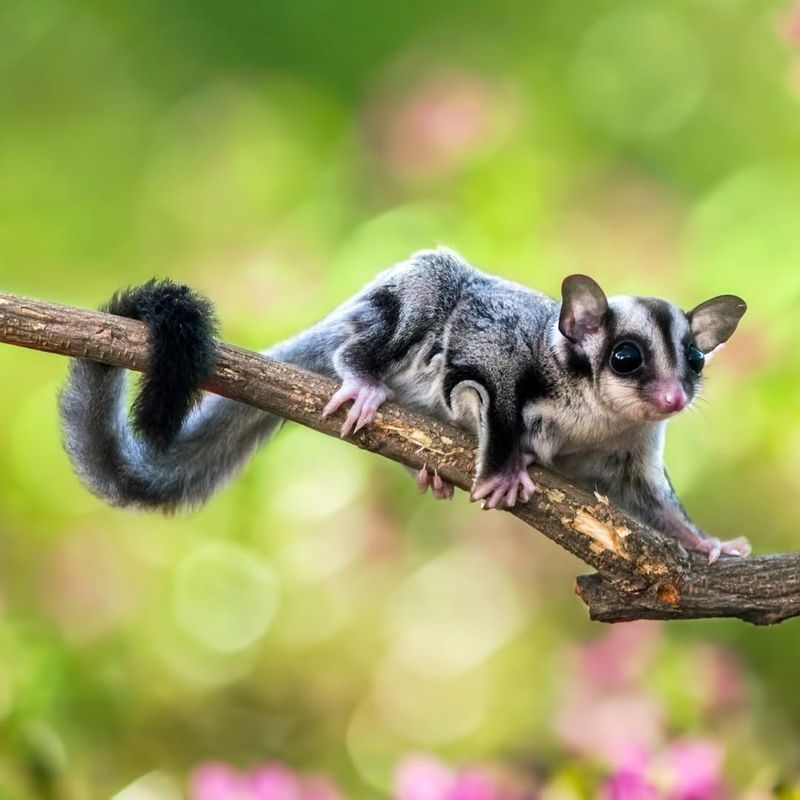
The sugar glider, a small, nocturnal marsupial, captivates with its ability to glide gracefully between trees. Native to Australia and New Guinea, these creatures are social animals with complex needs. Though they may seem like tiny flying squirrels, their requirements make them less than ideal as pets.
Sugar gliders thrive in groups, so keeping a single one can lead to loneliness and behavioral issues. Additionally, they need a spacious environment to mimic their natural habitat, which includes high trees for gliding and ample space to explore.
Their diet is another challenge, as they require a mix of fruits, insects, and special nectar. Improper feeding can lead to severe health problems. While their gliding antics are delightful, sugar gliders are best left to the wild, where they can zip and zoom through the trees to their heart’s content.
5. Hedgehog
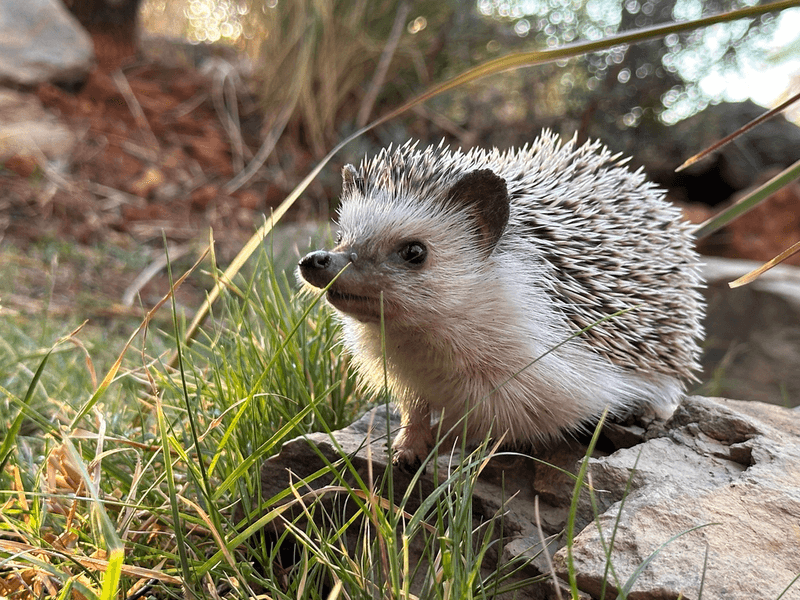
With their spiky quills and cute faces, hedgehogs often top the list of adorable animals. However, these nocturnal creatures, native to parts of Europe, Asia, and Africa, are not well-suited for domestication. While they may tolerate handling, their natural behaviors and needs are better suited for the wild.
Hedgehogs require a diet rich in insects, worms, and fruits, which can be challenging to replicate in captivity. Moreover, they need ample space to roam and forage, as well as a safe environment free from predators.
They are also known for being solitary animals, preferring to explore their surroundings alone. Handling them too often can lead to stress and a decline in their health. Instead of bringing a hedgehog home, consider supporting wildlife habitats that protect these prickly yet charming animals.
6. Kinkajou
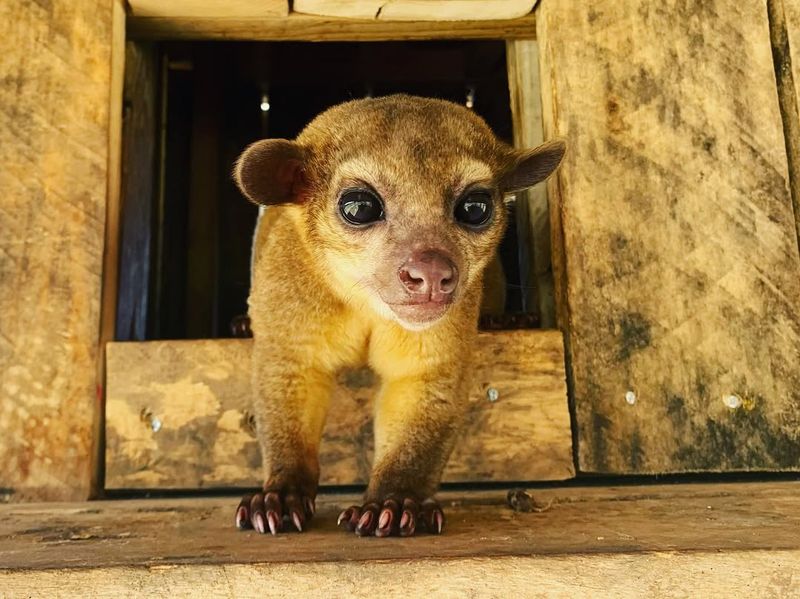
The kinkajou, with its large eyes and playful demeanor, might look like the perfect pet. Yet, these rainforest dwellers from Central and South America are best left in their natural habitat. Known as “honey bears” due to their sweet tooth, kinkajous have specific needs that are difficult to meet in a home setting.
These nocturnal animals are highly active at night, requiring plenty of space to climb and explore. Their long, prehensile tail aids in their arboreal lifestyle, making a typical house an unsuitable environment.
Kinkajous also have a specialized diet that includes fruit, honey, and nectar, which can be challenging to source and prepare. Their social and vocal nature means they are happiest in the wild, interacting with their own kind. So, when tempted by their cuteness, remember that kinkajous are better left swinging in the trees.
7. Pygmy Marmoset
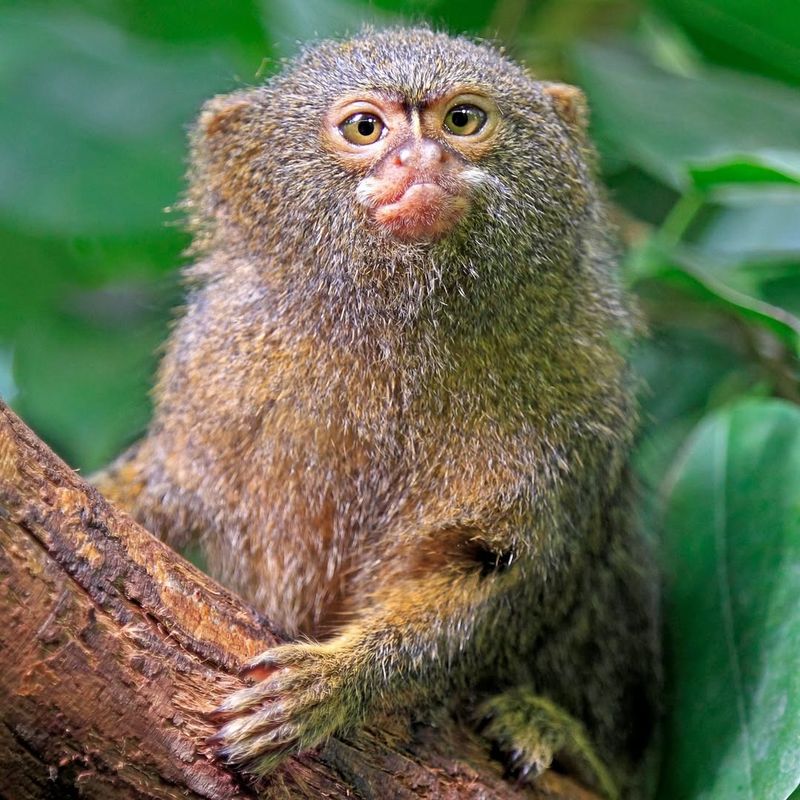
Pygmy marmosets, the smallest monkeys in the world, are undeniably adorable with their tiny size and expressive eyes. Native to the rainforests of the Amazon Basin, these primates are far from suitable as pets.
Their social structure and natural behaviors are complex, requiring a social group to thrive. In captivity, they can suffer from loneliness and stress if kept alone. Moreover, they need a wide variety of fresh fruits, insects, and tree sap, which can be difficult to provide outside their natural ecosystem.
Pygmy marmosets are also known for their agility and need for space to climb and explore. Their active lifestyle is hard to accommodate in a typical household. Instead of trying to keep these captivating creatures as pets, one could support conservation programs aimed at protecting their natural habitats.
8. Capybara
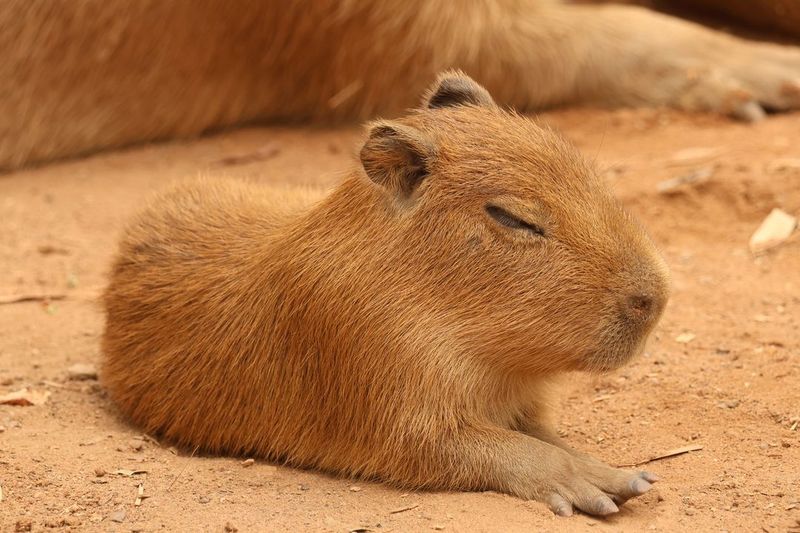
Capybaras, with their large size and friendly faces, are often dubbed “giant guinea pigs.” Native to South America, these sociable rodents are semi-aquatic, requiring both land and water to thrive. Despite their calm demeanor, capybaras are not suitable pets.
They live in large social groups and need space to roam, swim, and interact with their peers. A typical household cannot provide the environment or companionship they need for a healthy life. Their diet, consisting of grasses and aquatic plants, also poses a challenge for most pet owners.
Additionally, capybaras have specific veterinary needs, and finding a vet familiar with their care can be difficult. Instead of adopting a capybara, consider visiting them in their natural habitats or sanctuaries that work to preserve their populations.
9. Red Panda
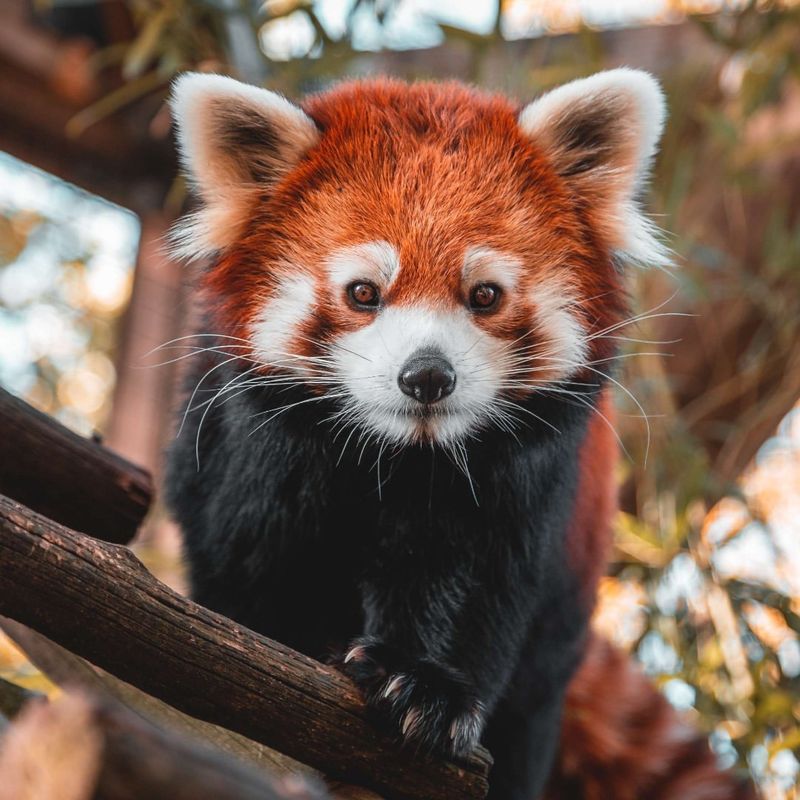
Red pandas, with their striking red fur and bushy tails, are a favorite among animal lovers. Indigenous to the Himalayan regions, these creatures are not suitable for domestic life. Their natural habitat and dietary needs are specific and complex.
Red pandas are arboreal and require forested environments with plenty of trees to climb and explore. They’re also solitary animals, needing large spaces to roam freely. Their diet mainly consists of bamboo, which can be hard to source and store.
These animals are also quite shy and can become stressed in a domestic setting. Instead of trying to domesticate these charismatic creatures, one can support conservation efforts aimed at preserving their natural habitats in the wild.
10. Wallaby
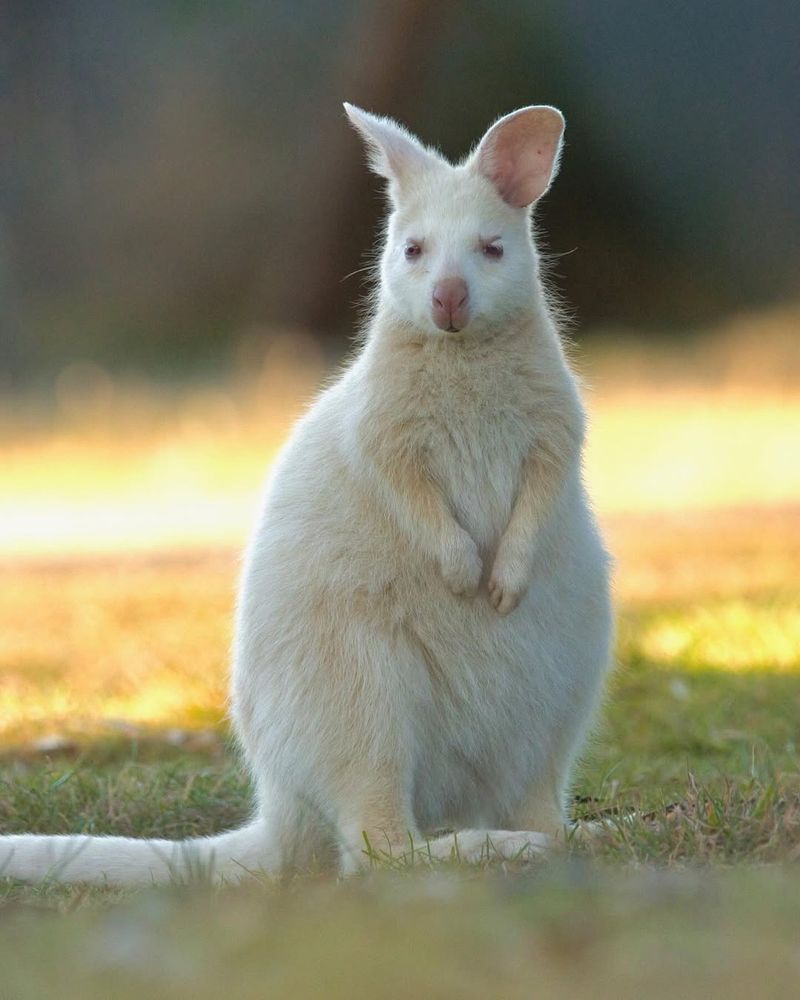
Wallabies, with their smaller size and kangaroo-like appearance, are often mistakenly seen as possible pets. These marsupials are native to Australia and New Guinea, where they roam in grassland and bushland environments.
Wallabies are highly active and social animals, requiring space and companionship that is difficult to replicate outside the wild. Their diet consists of grasses, herbs, and leaves, making nutritional balance a challenge in captivity.
They also have strong hind legs designed for hopping, which means they need large, open spaces to move freely. Without the proper environment and care, wallabies can become stressed and unhealthy. Admiring these delightful creatures in their natural habitats is the best way to appreciate them.
11. Degu
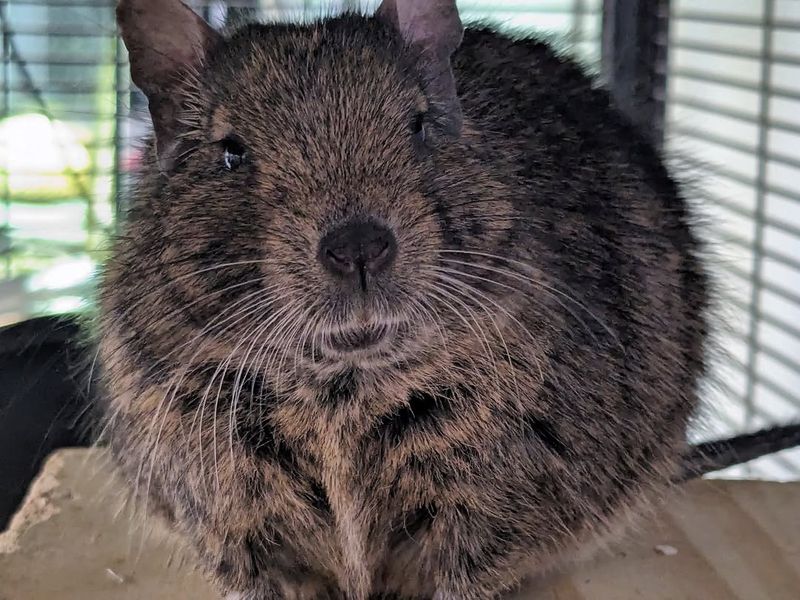
Degus, small rodents that resemble large gerbils, hail from the Chilean Andes. Their social nature and playful antics make them seem like good pets, but they have specific needs that are challenging to meet.
These creatures are highly social and need to live in groups to thrive. Keeping a single degu can lead to loneliness and behavioral issues. Their diet is also quite particular, primarily consisting of hay, fresh vegetables, and specialized pellets.
Degus are also known for their high energy and need for ample space to explore and exercise. Without a suitable environment, they can become stressed and unhealthy. Instead of keeping a degu as a pet, one might consider visiting them in educational facilities that support their natural living conditions.
12. Serval
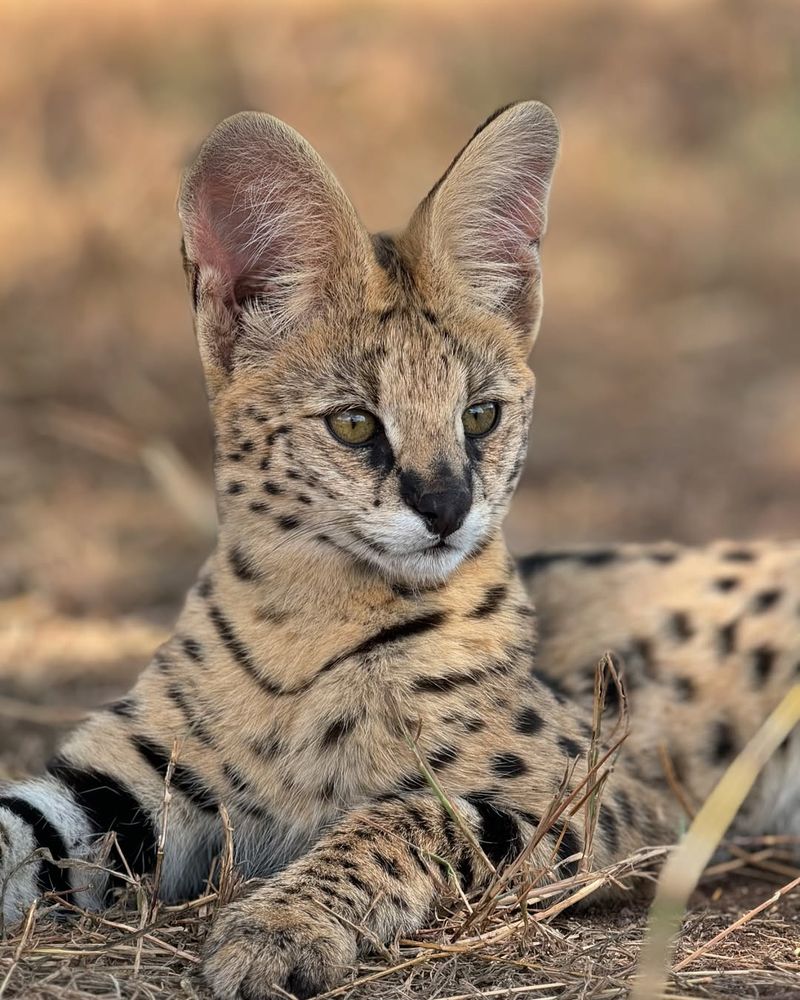
The serval, with its striking spotted coat and large ears, might seem like an exotic pet. However, these African wildcats are far from domesticated. Their natural behaviors and needs make them unsuitable for life in a human home.
Servals are solitary hunters, requiring large territories to roam and hunt for food. Their diet in the wild includes a variety of prey, which is difficult to replicate in captivity. Additionally, their need for complex enrichment and stimulation is hard to satisfy.
These cats are also known for their incredible jumping ability, which can lead to destructive behavior in confined spaces. Instead of bringing a serval home, consider supporting wildlife conservation efforts that protect their natural habitats in Africa.
13. Tarsier
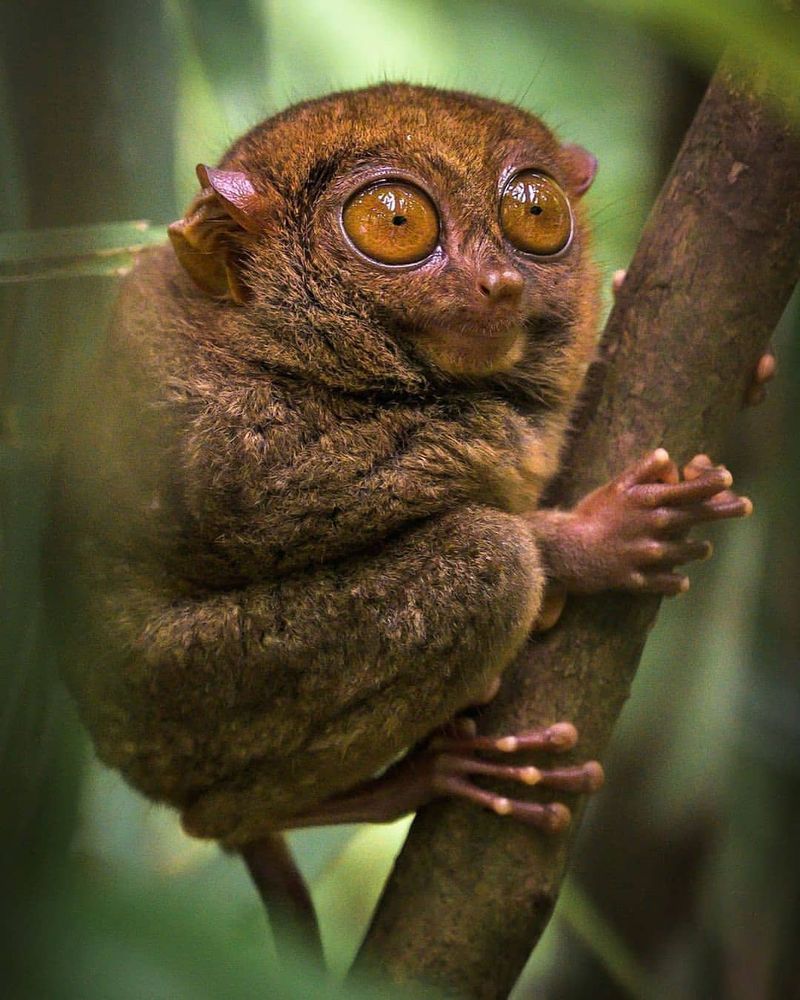
Tarsiers, with their large eyes and tiny bodies, are among the most intriguing primates. Found in the forests of Southeast Asia, these nocturnal creatures are best left in their natural environment.
Their huge eyes, adapted for night vision, require low-light conditions that are difficult to maintain in captivity. Tarsiers are also extremely sensitive to stress and noise, which can lead to health problems in a domestic setting.
These animals have a diet that consists largely of insects and small vertebrates, posing a challenge for pet owners. Additionally, tarsiers are known for their strong territorial instincts and need for space to explore. Supporting conservation efforts that protect their habitats is a better way to appreciate these fascinating creatures.
14. Skunk
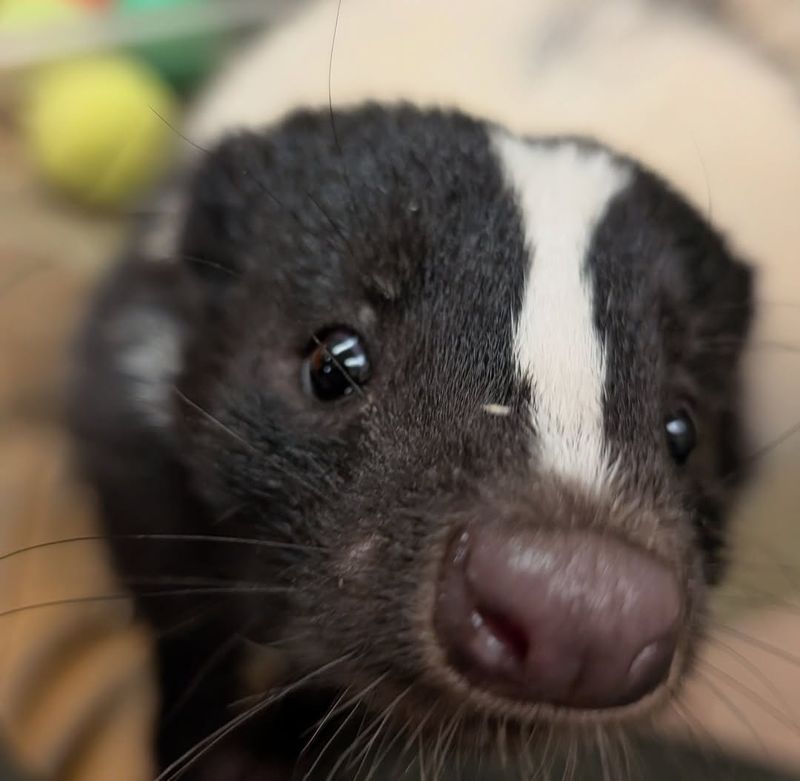
Skunks, with their distinctive black and white stripes, are more than just their notorious scent. Native to North America, these creatures might seem like an unconventional pet choice.
Skunks have specific dietary and environmental needs that are challenging to meet. They require a balanced diet of proteins, fruits, and vegetables, and their natural curiosity demands a safe and enriching environment to explore.
Additionally, skunks are wild animals with instincts that can’t easily be tamed. Their strong scent glands are a defense mechanism that remains intact even when kept as pets. Instead of considering a skunk as a pet, it’s better to enjoy their antics from a distance and support habitats that protect their way of life.
15. Raccoon
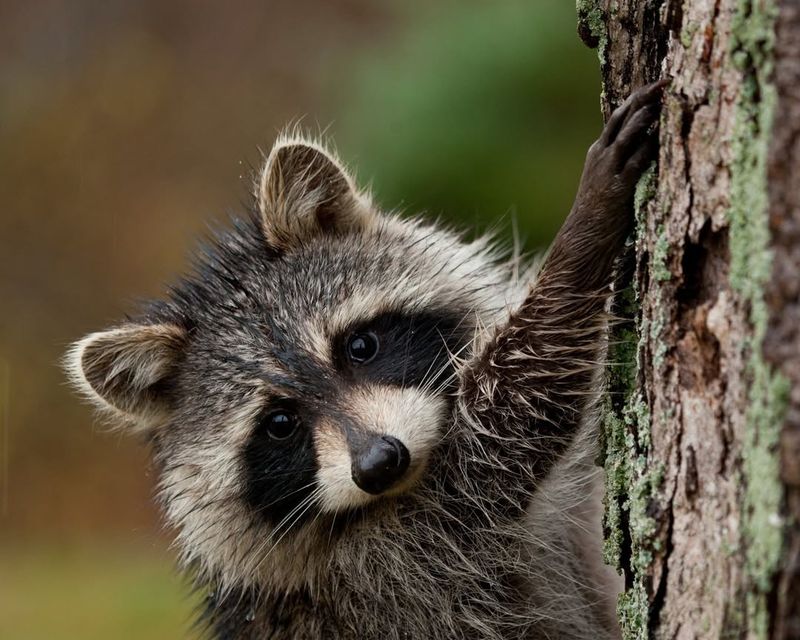
Raccoons, with their dexterous hands and masked faces, are iconic animals in North America. Though they are often seen in urban areas, raccoons are not ideal pets.
These intelligent creatures require a lot of stimulation and an environment that allows them to climb, explore, and forage. Their curiosity can lead to destructive behavior in a household setting, and their sharp claws and teeth can pose risks.
Raccoons are also known for their mischievous nature, which includes a high potential for troublemaking. Admiring raccoons from a safe distance and supporting wildlife programs that protect their natural habitats is a more sustainable way to appreciate these clever animals.
16. Sloth
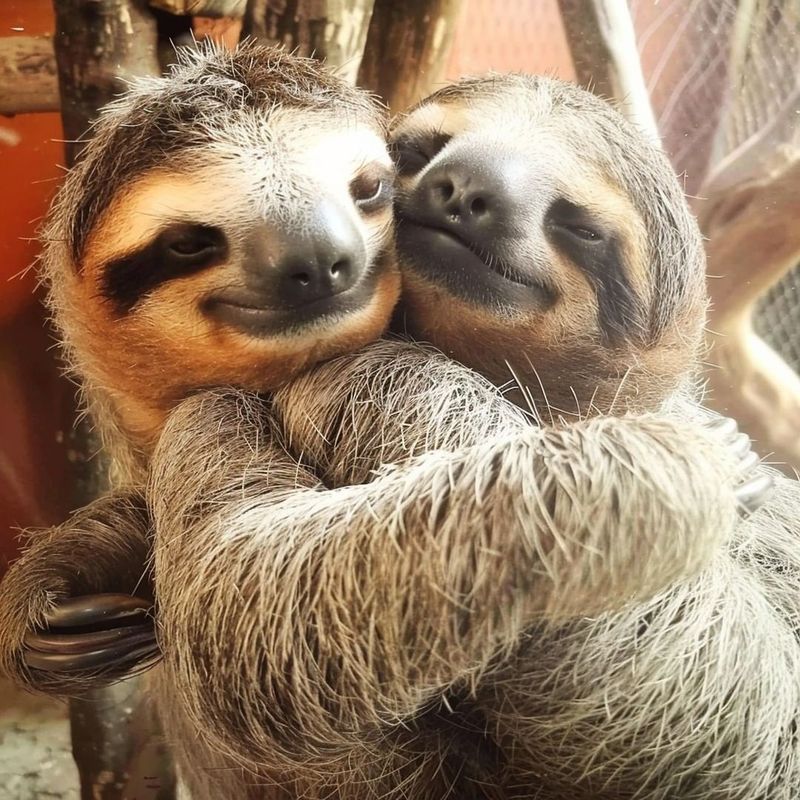
Sloths, with their slow movements and perpetual smiles, capture the hearts of many. These creatures are native to the rainforests of Central and South America, where they spend most of their lives hanging from trees.
Sloths have a highly specialized diet of leaves, making it difficult to replicate their nutritional needs in captivity. Their slow metabolism and specific habitat requirements make them unsuitable for typical household living.
Moreover, sloths require a quiet and stress-free environment to thrive, conditions not easily provided in a home. Instead of attempting to domesticate these gentle beings, supporting conservation efforts that protect their rainforest habitats is the best way to help.
17. Prairie Dog
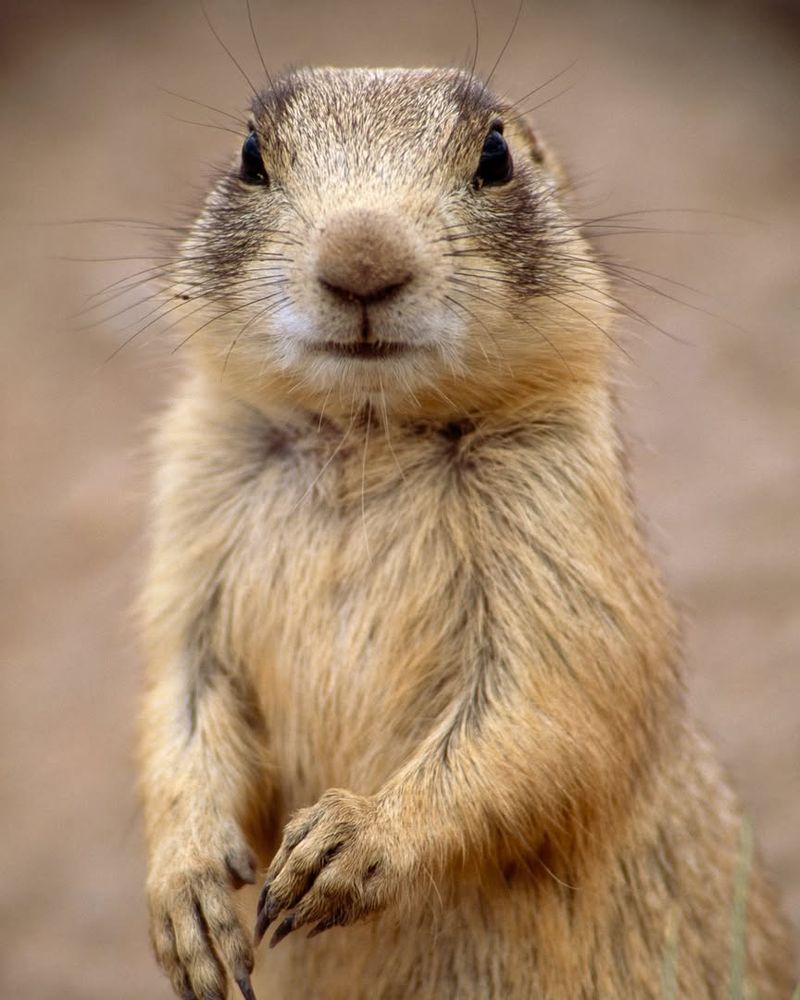
Prairie dogs, with their social nature and bark-like calls, are fascinating rodents native to North America’s grasslands. While they might appear to be suitable pets, their specific needs say otherwise.
These animals live in large colonies and require plenty of space to dig and burrow. Their social structure means they thrive in groups, and solitary living can lead to behavioral issues.
Prairie dogs have a specialized diet and need a safe environment free from predators. Their complex social behaviors and natural instincts are best observed in the wild. Instead of keeping prairie dogs as pets, supporting prairie conservation efforts can help preserve their way of life.
18. African Grey Parrot
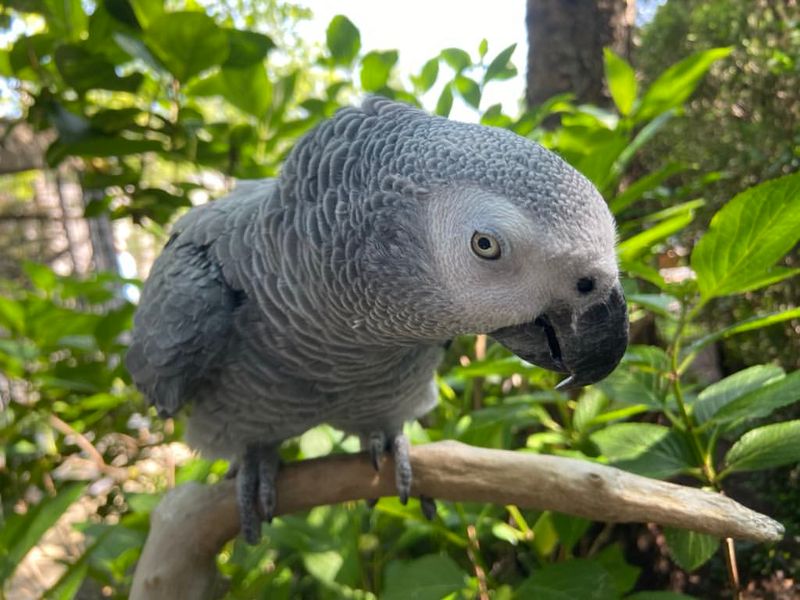
African grey parrots are highly intelligent birds known for their ability to mimic human speech. While their intelligence and beauty are captivating, they require more attention and care than most people can provide.
These parrots are highly social and need constant interaction and stimulation to stay happy and healthy. Their diet is complex, requiring a variety of fruits, vegetables, and specialized pellets.
African grey parrots can live up to 50 years, making them a long-term commitment that many are not prepared for. With their demanding needs and potential to develop behavioral problems if neglected, these birds are best appreciated in sanctuaries and aviaries where they can thrive.

